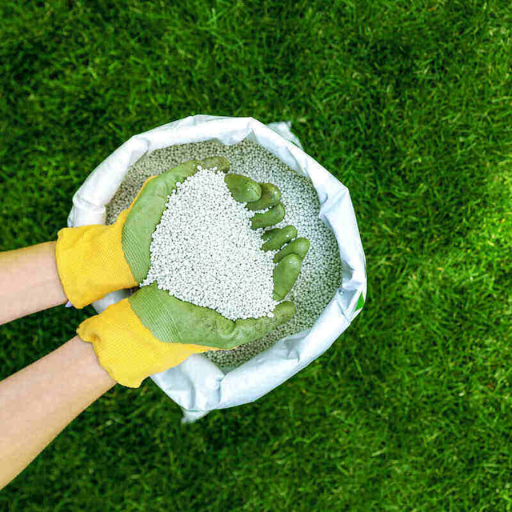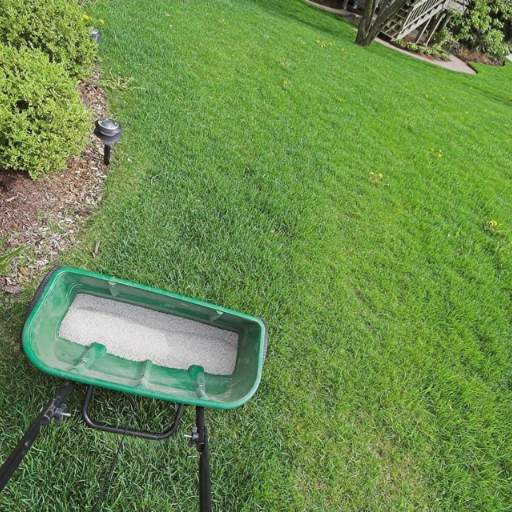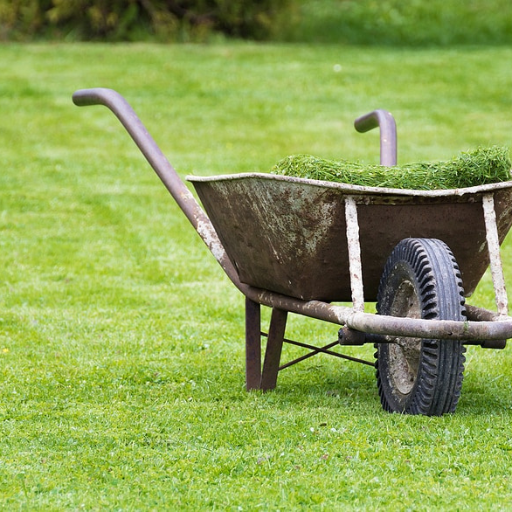Creating and maintaining a lush, green lawn can be a rewarding endeavor, but it all starts with the right foundation. In this guide, we will delve into the essentials of using organic lawn starter fertilizer to establish a vibrant and healthy turf. From understanding the benefits of organic materials to learning how to apply fertilizers effectively, this article will provide you with the knowledge you need to nurture your lawn from the ground up. Whether you’re a seasoned gardener or a novice looking to improve the quality of your turf, our comprehensive approach will help you make informed decisions every step of the way. Let’s explore the pathway to achieving a thriving, eco-friendly lawn that enhances your outdoor space and contributes positively to the environment.
What is Organic Lawn Starter Fertilizer?

Understanding Organic Fertilizers
Organic fertilizers are derived from natural sources such as plant residues, animal manure and compost while synthetic ones come from chemical processes. They add essential nutrients to the soil improving its structure and enhancing its water and nutrient holding capacity unlike artificial fertilizers which directly supply nutrients to crops. These fertilizers release nutrients slowly so that they promote long term soil health and reduce the need for repeated applications of them. By enriching the soil organically, they create a sustainable environment for grass roots to thrive hence leading to healthier and more resilient lawn.
The Advantages of Using Organic Lawn Starter Fertilizer
There are many benefits associated with using organic lawn starter fertilizers that facilitate quick establishment and long-term turf health. Here are some of the key advantages:
- Environment Friendly: They are made from natural materials thus do not have any harmful chemicals avoiding pollution therefore preserving local ecosystems.
- Superior Soil Health: These improve soil structure by adding organic matter and promoting water retention in it. They also support beneficial microbial activities necessary for nutrition cycling.
- Sustainable Nutrient Release: In other words, these suppliers of nutrients diffuse them slowly within time. This continuous redistribution helps slow down leaching or run offs of these macro- and micro-elements.
- Enhanced Root Development: The organic starters have high phosphorus (P) content typically within 3-4% range (e.g., N-P-K ratio is 3-4-2) hence assisting in developing strong root systems critical for establishment of turfgrass.
- Increased Disease Resistance: Potassium (K) constitutes approximately 2%, strengthening cell walls in plants making them less susceptible to diseases especially those attacking lawns under stress conditions.
- Safe for Humans and Pets: Because they don’t include any harmful substances, organic fertilizers can be used near children or pets without being at risk.
Organic lawn starter fertilizers will help you achieve a healthy vibrant turf while keeping your ecological footprints at a minimum.
Comparing Organic Vs. Chemical Fertilizers
When comparing organic and chemical fertilizers, several factors need to be considered:
Nutrient Availability:
- Organic Fertilizers: The slow release of nutrients ensures that they are available over time, which is important for long-term soil health as it reduces nutrient runoff and leaching.
- Chemical Fertilizers: They provide instant nourishment to plants hence promoting quick growth. Nevertheless, such rapid release may result in nutrient leaching with only transient boost of soil fertility.
Soil Health:
- Organic Fertilizers: Increase the amount of organic matter in soils thus improving microbial activities involved in nutrient cycling. Enhanced water retention properties lead to an overall improved quality of the soil.
- Chemical Fertilizers: May damage the structure and lessen microbiological activity in soil over time that could eventually become compacted and less fertile.
Environmental Impact:
- Organic Fertilizers: Lower environmental footprint due to natural composition. Such actions contribute to cleanliness of surroundings thereby helping reduce pollution as well as encourage biodiversity preservation.
- Chemical Fertilizers: Runoff from their application into water bodies can cause algal blooms among other issues resulting in water pollution hence its potency is harmful when misused in an improper way.
Safety:
- Organic Fertilizers: Are generally safe for use around children, pets, and wildlife because they are free from harmful chemicals.
- Chemical Fertilizers: Mishandled can be unsafe chemicals posing danger to human beings and animals given that some contain hazardous substances.
Main Points
These two types of fertilizers have their own merits and demerits. The selection for organic or chemical fertilizers is usually based on your requirements, such as how soon you want to see the results and what you desire from your soil in future. In terms of sustainable gardening as well as lawn care, organic fertilizers take a holistic approach while chemical ones provide an instant nutrient boost that leads to quick growth.
How to Apply Organic Lawn Starter Fertilizer for Best Results?
When to Use Starter Fertilizer
The optimal time for using starter fertilizer is when it is necessary to establish a lawn. It is advisable to use the starter fertilizer during grass seed sowing or sod laying in order to achieve best outcomes. The best time is early spring or early fall, when temperatures are cooler and there is sufficient rainfall for germination of seeds and development of roots. This way, the grass grows healthier and stronger thus ensuring the effective utilization of nutrients from the starter fertilizer.
Starter Application Steps For Your Lawn
- Test Your Soil: Before applying any fertilizers, ensure you check your soil’s pH levels and any deficiencies in nutrients present before. By doing this, you will be able to determine what needs your lawn has so that you can apply accordingly.
- Clear and Mow: Trim your lawn down to 1-2”, and then rake off all debris including dead grass at its surface so that the soil becomes open for receiving fertilizer.
- Amount Calculation: Find out how much of the starting compound your garden requires by measuring its size. Choose depending on advisements given by the manufacturer.
- Even Distribution: When spreading across a yard, do so uniformly with a broadcast spreader or drop spreader machine. While doing this make sure that you walk at a pace that’s steady so as to give equal chances for distribution as not to apply too much.
- Proper Watering: Assure deep penetration of nutrients into lawn by watering immediately after applying fertilizer. This allows activation process of these substances hence promoting root growth.
Regular Monitoring Of Plant Growth: Observe changes closely and water regularly especially if there isn’t enough rainwater available in order to help ensure proper germination of grass seeds with strong root systems.
Common Misapplications To Avoid In The Process
- Excessive Fertilizing One obvious mistake made here is over-using fertilizers. An overdose of fertilizer kills your lawn by scorching it and drying it up. The instructions given on the bag should be strictly followed
- Timing: Time is vital when applying fertilizer; avoid doing it during the day, especially in the afternoon when the sunlight is too hot or heavy rain is about to fall as this will just wash away all nutrients before they are taken in.
- Inconsistent application: Uneven fertilizer application leads to unbalanced nutrient content and patchy growth. Use a spreader to ensure even distribution, slightly overlapping while going back and forth so that you do not miss any spots.
What are the Essential Nutrients in Organic Lawn Starter Fertilizer?

Role of Nitrogen in Lawn Health
Nitrogen is a vital nutrient that plays a crucial role in lawn health. It is essential for the growth and development of grass, contributing to the vibrant green color and dense growth that characterize a healthy lawn. Nitrogen promotes the synthesis of chlorophyll, which plants use in photosynthesis to convert sunlight into energy. This nutrient also aids in the production of proteins and other important compounds necessary for cell division and growth. A nitrogen deficiency can lead to pale, yellowing grass that is weak and more susceptible to diseases and pests. Therefore, ensuring your lawn receives an adequate supply of nitrogen is fundamental for maintaining a lush, healthy, and resilient lawn.
Importance of Phosphorus for Root Growth
Phosphorus is a key nutrient that is critical for the root development and overall strength of your lawn. It plays a significant role in the energy transfer processes within plants, facilitating photosynthesis and the transformation of nutrients into usable forms. Phosphorus encourages the growth of robust root systems, which are essential for water and nutrient uptake. It also contributes to the establishment of new grass and aids in recovery from stress and damage. Without adequate phosphorus, your lawn’s root growth may become stunted, leading to weaker grass that is less resilient to drought and more prone to disease. Therefore, integrating phosphorus into your lawn care regimen ensures a stable foundation for a healthy, thriving lawn.
The Function of Potash in Organic Fertilizers
Potash (or potassium) constitutes one vital plant nutrient found in organic fertilizers which significantly contribute to overall soundness plus hardiness of the crops. Within the plant’s body, it takes part actively various physiological activities including protein synthesis as well as starch formation used for storage of energy sources and structure building blocks. Functioning within plants’ biological systems include water regulation control during osmoregulation and the initiation of a range of enzymes that influence metabolic processes. In addition, potassium strengthens cell walls in plants hence providing an opportunity to resist infections as well as deal with different stresses such as droughts or extreme heat. When you include potash in your landscape care program, you help your lawn grow hardy and keep fit year through.
How to Choose the Right Organic Starter Fertilizer for Your Lawn?

Types of Organic Fertilizers: Liquid Lawn vs. Granular
There are several factors to consider when choosing between granular and liquid lawn organic fertilizers.
Liquid Lawn Fertilizers:
- Absorption Speed: Grass and soil take in liquid fertilizers quickly, making the nutrients available immediately. This makes them perfect for lawns that require speedy greening or recovery from stress.
- Application: They can be sprayed evenly on the lawn through a hose-end sprayer or sprinkler system.
- Frequency: It may be necessary to use them more often than granular fertilizers because they are absorbed quickly.
Granular Fertilizers:
- Slow Release: Granules release nutrients slowly over time until essential minerals are provided at all times. As a result, there is even growth and less danger of over-fertilizing.
- Convenience: Granules can be manually spread or broadcasted with a spreader, requiring fewer applications than liquids normally do.
- Longevity: Their nature of being slow-release also means that they do not need lots of applications throughout the growing season; hence, it is low maintenance alternative for lawn care services.
Ultimately, deciding between organic liquid and organic granular fertilizers will depend on your specific yard needs as well as immediate nutrient requirements and maintenance preferences. Both types have unique benefits to your lawn’s overall healthiness and strength.
Reading and Understanding Fertilizer Labels
To make informed choices about your lawn, you must read fertilizer labels correctly. Here are the important ones to zero in on:
- N-P-K Ratio: The ratio indicates how much Nitrogen (N), Phosphorus (P) and Potassium (K) each fertilizer contains. For example, if 10-5-5 appears on a label it implies that it contains 10% nitrogen, 5% phosphorus, 5% potassium thus promoting growth, encouraging root development and enhancing overall plant resilience respectively.
- Nutrient Sources: Determine whether the nutrients are organic or synthetic. Organic fertilizers have slower nutrient release but improve soil while synthetics provide immediate nutrient availability.
- Application Instructions: Stick to the recommended rates and methods to prevent over application that would otherwise damage your lawn and pollute the environment. Some labels give guidance based on the size and status of your lawn.
- Additional Ingredients: Secondary nutrients like calcium, magnesium, iron etc. can be found as well in some fertilizers which address specific deficiencies and further boost the health of lawns.
By scrutinizing fertilizer labels with care you will be able to select the most suitable product for your lawn’s unique needs resulting in optimum growth and vitality.
Conducting a Soil Test to Determine Nutrient Needs
To understand what it requires for healthy living, conducting a soil test is an important step in understanding what your lawn needs by way of nutrients. Here is how you should go about doing it right:
- Sample Collection: Sample various parts of your yard at around 6-8 inches deep into the ground so that you get a representative sample Mix these samples together in a clean container.
- Testing Procedure: Submit this mixed soil sample to a reputable soil testing lab which can be obtained from local agricultural extensions or gardening centers; follow their instructions carefully for best results.
- Interpreting Results: In order to know your soil’s pH level along with all critical nutrients such as nitrogen, phosphorus, potassium and other essential mineral elements contained in the result.
- Take Action: Grounded in the test results, one can tailor the fertilization schedule to rectify any nutrient deficiencies or imbalances that may exist. Pick up on fertilizers that are tailored with your soil in mind and it will promote optimal growth of the lawn.
By doing a soil test, you remove the guesswork in maintaining a lawn and let your lawn have exactly what it needs to be more successful.
What Are Common Issues and Solutions with Organic Lawn Fertilizers?

How to Handle Weeds and Pests Naturally
When I handle weeds and pests naturally, I basically try to combine several methods that are environmentally friendly in order to maintain the health of my lawn without chemically treating them. In order to control weed growth, I usually mow the lawn on a regular basis at the right height and use mulch for this purpose. Simultaneously, I remove weeds manually or use organic herbicides made from natural ingredients like vinegar. For this reason, whenever there is a need of controlling pest populations, I normally introduce helpful insects such as ladybugs or predatory nematodes among others. Moreover, I use neem oil or diatomaceous earth as natural repellants because they help protect my lawn from damage caused by these pests. Thus through implementation of these means, my garden remains healthy while it flourishes ecologically.
Avoiding Over-Fertilization
Over-fertilizing can be detrimental to my lawn’s health due to nutrient imbalances and environmental pollution caused by excess chemicals on the soil. To avoid over-fertilization measures must be put into place such as applying fertilizer according to rates stipulated in their packaging so that one does not fertilize immediately before heavy rains which may lead to run off. Also a good idea can be using an organic slow-release fertilizer that will gradually supply nutrients needed by grasses for their optimal growth. When over-fertilizing happens, my immediate response is deeply watering the turf so as dilute and disperse any excessive nutrients available. In more serious cases, some soils have even had to be removed and re-seeded after fertilization mistakes were made. It is good for me therefore always monitor how well my lawns respond to fertilizers applied in relation to tests carrying out regularly on soil samples hence adjusting my fertilizer application frequency accordingly until when it becomes balanced.
Dealing with Slow Growth/Tiny Grass
To resolve slow growth and thin grass conditions in my lawn, it is important that I open up the grass a bit so that it receives enough sunshine by cutting or shortening surrounding trees and shrubs. This will not only allow air circulation but also promote water absorption as well as nutrient uptake through soil aeration. Moreover, watering should be done properly through putting 1 inch of water weekly; preferably during morning hours when there are no evaporation. In order to encourage growth of healthy plants one can apply slow release fertilizer in form of granules on his lawn which are made of equal parts of nitrogen, phosphorus and potassium (NPK). By mowing regularly at optimum height of 2.5-3 inches, this removes stress from the plants thus resulting in denser turf cover. Therefore, these steps help my lawn grow fast with a green lush appearance as possible.
Frequently Asked Questions (FAQs)

Q: Can it be possible to explain how new lawn can get better by using organic lawn starter fertilizer?
A: To stimulate seedling and plant growth, in a natural way, without the use of harsh chemical compounds that are known to boost the overall health of a newly planted piece of land is the reason why organic lawn starter fertilizers naturally supply vital nutrients.
Q: What is the most suitable NPK ratio for organic lawn starter fertilizer?
A: For example, an ideal NPK (Nitrogen, Phosphorous, and Potassium) ratio for an organic lawn starter fertilizer typically includes a balanced formula like 10-10-10 or 5-5-5 that ensures uniform nutrient distribution for healthy grass growth.
Q: Can I apply organic lawn starter fertilizer on my existing lawn?
A: Yes, already growing lawns can benefit from these products especially if you want to have better soil quality and stronger grass growth.
Q: How many square feet does one bag of organic lawn starter fertilizer cover?
A: While different products vary in their range of coverage generally 20lbs bag of lawn starter fertilizer covers up to 5000sq. ft. For specific information on coverage always refer back to product label
Q: How are Organic Lawn Starter Fertilizers Different from All-Purpose Fertilizers?
A: Unlike All-purpose fertilizers which are meant for general use around the garden and other applications across yards, Lawn Starter Fertilizer Organic is specifically formulated as an aid to newly seeded or sodded lawns containing not more than natural ingredients that will burn the grass unless otherwise stated.
Q When should I apply it when I consider putting down some organic lawn starter fertilizer?
A; It’s best to go with this type when reseeding or overseeding your yard. It should be included in your program on upkeep with two or three weeks prior application before seeding/sodding gives best results.






